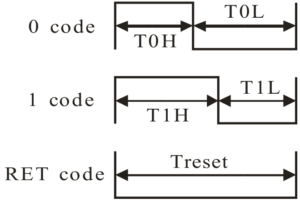As we have finished another lap around the sun. The year is coming to an end. Looking at my blog, I’ve realised I skipped my looking back on 2016 and 2015. That’s a lot of looking back to do, and I suppose I might mix some things up.
 So, the past year, what has happened. To those who haven’t yet realised. I’ve ditched my smart phone. I have been an early adaptor regarding Android Smart Phones. Back in the days I’ve bought the Google G1, the first Android smart phone. I was intrigued by the idea of a phone running a Linux kernel. Nevertheless, I’ve come to the decision I do wish to use a smart phone no longer. First of all, such a smart phone is a power hungry device, requiring to be charged quite often. As such, I do not regard it as a reliable means of communication. Furthermore, such a smart phone is a source of distraction.
So, the past year, what has happened. To those who haven’t yet realised. I’ve ditched my smart phone. I have been an early adaptor regarding Android Smart Phones. Back in the days I’ve bought the Google G1, the first Android smart phone. I was intrigued by the idea of a phone running a Linux kernel. Nevertheless, I’ve come to the decision I do wish to use a smart phone no longer. First of all, such a smart phone is a power hungry device, requiring to be charged quite often. As such, I do not regard it as a reliable means of communication. Furthermore, such a smart phone is a source of distraction.
Speaking of distraction, another thing I have been avoiding the past few months is Facebook. Another source of distraction, scrolling  endlessly through fake news and other nonsense. I haven’t cancelled my Facebook account, I might look at it from time to time, but I’ve removed Facebook from my daily routine. And damn, Facebook is an addictive bitch. I logged in to post some Christmas wishes, and before I knew it I found myself scrolling for a few miles.
endlessly through fake news and other nonsense. I haven’t cancelled my Facebook account, I might look at it from time to time, but I’ve removed Facebook from my daily routine. And damn, Facebook is an addictive bitch. I logged in to post some Christmas wishes, and before I knew it I found myself scrolling for a few miles.
The above means I am no longer reachable on Whatsapp, and messages on Facebook messenger might take a month or longer to get a response. If you need me, send an email or call me.
Well… as I mentioned above, it seems I’ve got some catching up to do. When did I graduate again? Hmm… that was in 2014, so I’ve written about getting my Master’s Degree and Philosophy Certificate. So… after graduating, what’s next? In 2015 I took a sabbatical. A year to figure out what do to next. Being a student, life was quite simple, go to class, study, pass exam, and repeat. Quite clear what is expected from me. But after that, what to do next? I didn’t feel like working in a big company, I didn’t feel like being another cog in the machine. I wanted to be in a place where I could make a difference. I wanted to do something important. But where was that place? What was I looking for? I knew what I did not want, but what alternatives are there, that I did not know.
In my search, I’ve met some individuals who wanted to begin a restaurant. But why would some people starting a restaurant be relevant to someone who just got a degree in Computer Science? Well… there were some plans, ordering with tablets, which allow customising the menu, allowing for guests to enter allergies or other ingredients they want to avoid, or to include, where the tablet would show dishes to match these queries. That is where I came in. Unfortunately, this project never came into existence. The restaurant opened its doors with a traditional paper menu, and unfortunately was forced to close its doors due bankruptcy.
So, when it became clear the tablet based menus were not coming soon, I started to think of alternatives. I’ve decided to become self-employed. And as such, my company name would be “The IT Philosopher”. That name fits my education, right?
But well, a company needs customers, right? Well… I’ve been providing website hosting to some people, so I turned those people into my first customers. But well, hosting a few website doesn’t generate enough money, I needed to get more customers. Soon I found a company in need of my services as a software developer. I worked on a project for Manus VR, updating their SDK. And after finishing that project, I was asked for another project within that company. And when another project came up, I became employed by that company. So, I am working part-time for Manus VR, and doing some other projects for my own company.
The next things are kinda difficult to write. How to find the right words to express these things. I’ve lost two friends. In 2016, Derrel died of cancer. It all happened so quick. I mean, like I was told he was ill on a Friday, and then, even before this news could sink in, he already died. Derrel, who was he? A poet, a trouble maker, and what else. Oh… Derrel… A couple of years ago, I’ve dated him, well… only for a week or so, I mean, we weren’t exactly a match, but still. Even though it didn’t work between us, I am under the impression that I did have a good influence on him.
And then, last year, I’ve lost another friend. Joyce died while giving birth to her child. It’s not imaginable something like that can happen in the 21st century, but yet, it happened. I mean… how is such thing possible? I’ve known her since 2001. She was the friend I’ve known for the longest time, a long friendship that was. And I’ve been one of the first people who she told she was pregnant, even before her parent knew. I mean… wow. And then, this evening she called me, telling me the child was coming. And then, the next thing, when her boyfriend called me, I assumed to tell me he became a dad, he told me Joyce died. It’s so… unreal… It’s so something you’d expect to happen in 1917 and not in 2017. It’s so unreal…
So.. in the past two years, I’ve buried two of my exes. I mean… can you imagine such a thing? Yet… and me… who I was, and who I am. I think I have become much stronger then I ever was. In some way, at least. These events didn’t seem to have a big impact on my happiness. And I suppose, some of you might know, I haven’t always been this emotionally stable. But now, it seems even losing people important to me can’t bring me down.
Yet, there are things I need to watch for. I need to take care of myself, in the sense that I need to ensure I get enough rest. There was an instance the past year, I didn’t rest enough, almost resulting in a burn-out. Oh… it’s difficult to rest when people are counting on you, on your work. When you feel like you need to finish stuff people are waiting for. I suppose I need to learn when to say “no”. That’s something that’s never easy.
Some of my recent thoughts, yeah, the philosopher inside me is alive. On certain corners of the social media, you’ll find post telling you to love yourself, there are corners of the internet where depressed teenagers say they hate themselves. But what is this “self”. I mean, I know what it means to love someone, I know what it means to hate someone. But the self-to-self relationship is something that puzzles me. I do not relate to myself the same way I relate to anything else in the universe. Therefore, something that has a clear meaning when it indicates a relationship between a subject and an object, doesn’t make much sense to me when the subject becomes objectified. Or, I should rephrase that, there is no “self” as an entity. I do not exist on my own. I always exist in a relationship to the something else. I exist in a situation, I exist in a social context, I exist in a relationship to other people. I cannot exist without context. That means, I can say I like or dislike the situation I’ve created by my actions, but this is always in relation between me and others. So, basically, the self, is not an entity, but it is about relationships between entities.
There are some more questions playing around in my mind. Something about identity, about the individual and the collective, about mythology, about religion. But I suppose that’s for the next time.
Happy new year, my friends!


 endlessly through fake news and other nonsense. I haven’t cancelled my Facebook account, I might look at it from time to time, but I’ve removed Facebook from my daily routine. And damn, Facebook is an addictive bitch. I logged in to post some Christmas wishes, and before I knew it I found myself scrolling for a few miles.
endlessly through fake news and other nonsense. I haven’t cancelled my Facebook account, I might look at it from time to time, but I’ve removed Facebook from my daily routine. And damn, Facebook is an addictive bitch. I logged in to post some Christmas wishes, and before I knew it I found myself scrolling for a few miles.

